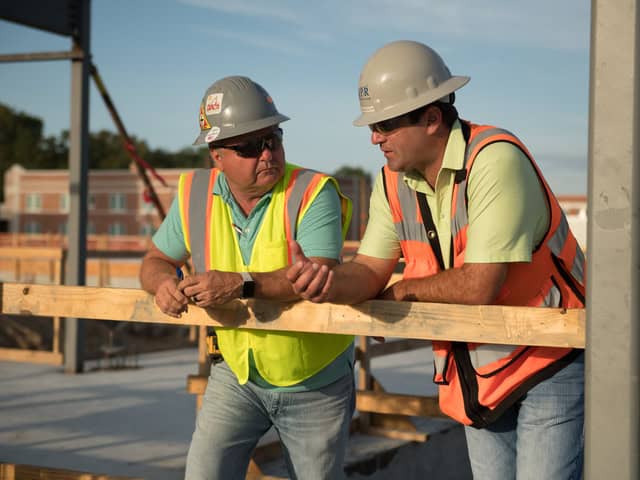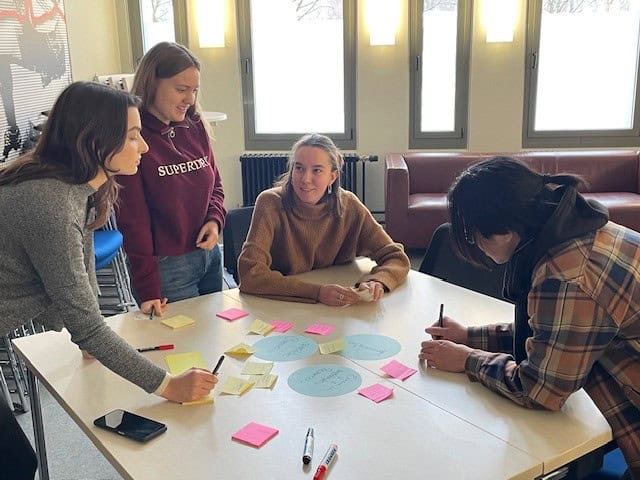Strengthening Communities for Long-Term Sustainability and Growth
Community resilience represents a community’s ability to prepare for, respond to, and recover from challenges while maintaining essential functions and emerging stronger than before. In an era of increasing social, economic, and environmental uncertainties, building resilient communities has become more critical than ever.
Understanding Community Resilience
What is Community Resilience? Community resilience encompasses multiple dimensions:
- Social resilience: Strong relationships, trust, and collective efficacy
- Economic resilience: Diverse economic base and financial stability
- Infrastructure resilience: Robust and adaptable physical systems
- Environmental resilience: Healthy ecosystems and sustainable practices
- Institutional resilience: Effective governance and adaptive capacity
Core Characteristics of Resilient Communities Resilient communities typically demonstrate:
- Strong social networks and community connections
- Effective leadership and governance structures
- Economic diversity and local resource utilization
- Adaptive capacity and innovation mindset
- Environmental stewardship and sustainability practices
- Inclusive decision-making processes
- Preparedness for various types of disruptions
Social Resilience: Building Strong Community Bonds
Fostering Social Cohesion Strong social connections form the foundation of community resilience:
Community Building Activities:
- Regular community gatherings and festivals
- Neighborhood associations and block parties
- Volunteer programs and community service projects
- Intergenerational activities connecting different age groups
- Cultural celebrations that honor diversity
- Shared community spaces and gathering places
Building Trust and Social Capital:
- Transparent communication from local leaders
- Inclusive decision-making processes
- Conflict resolution and mediation programs
- Community dialogue and listening sessions
- Collaborative problem-solving initiatives
- Recognition and celebration of community contributions
Strengthening Community Networks Effective networks enhance collective problem-solving capacity:
- Mapping existing community assets and connections
- Creating platforms for information sharing
- Establishing mutual aid and support systems
- Developing community resource directories
- Facilitating partnerships between organizations
- Building connections across different community sectors
Promoting Civic Engagement Active citizen participation strengthens democratic processes:
- Voter registration and education campaigns
- Town halls and public forums
- Citizen advisory committees and boards
- Community organizing and advocacy training
- Youth civic engagement programs
- Digital platforms for civic participation
Economic Resilience: Creating Sustainable Prosperity
Diversifying the Economic Base Economic diversity reduces vulnerability to external shocks:
Local Business Development:
- Small business incubation and support programs
- Local entrepreneur mentorship networks
- Access to microfinance and funding opportunities
- Business development training and resources
- Local procurement and “buy local” campaigns
- Co-working spaces and business hubs
Supporting Key Economic Sectors:
- Agriculture and food systems development
- Tourism and cultural heritage preservation
- Renewable energy and green technology
- Creative industries and arts sectors
- Healthcare and social services
- Education and training institutions
Building Local Economic Resilience Strategies for strengthening local economies:
- Local currency and time banking systems
- Community-supported agriculture programs
- Local investment funds and credit unions
- Skills training and workforce development
- Technology access and digital literacy programs
- Economic impact assessments and planning
Creating Economic Opportunities Ensuring broad-based economic participation:
- Job training programs for emerging industries
- Support for women and minority-owned businesses
- Youth entrepreneurship and career development
- Senior employment and volunteer opportunities
- Accessible business development resources
- Financial literacy and economic education
Infrastructure Resilience: Building Adaptive Systems
Essential Infrastructure Systems Resilient communities require robust infrastructure:
Physical Infrastructure:
- Reliable transportation networks
- Resilient energy and utility systems
- Adequate housing and community facilities
- Healthcare and emergency services infrastructure
- Communication and information systems
- Water and waste management systems
Green Infrastructure:
- Parks and green spaces for community health
- Sustainable stormwater management systems
- Urban agriculture and food production areas
- Renewable energy installations
- Natural area preservation and restoration
- Climate-adaptive infrastructure design
Infrastructure Planning and Maintenance Strategic approaches to infrastructure development:
- Comprehensive community infrastructure assessments
- Long-term capital improvement planning
- Maintenance and upgrade scheduling
- Climate resilience and adaptation planning
- Community input in infrastructure decisions
- Innovative financing and funding strategies
Environmental Resilience: Sustainable Practices
Environmental Stewardship Protecting and enhancing natural resources:
Conservation Initiatives:
- Habitat restoration and biodiversity protection
- Sustainable land use and zoning practices
- Water conservation and watershed protection
- Air quality monitoring and improvement
- Waste reduction and recycling programs
- Sustainable transportation options
Climate Adaptation Strategies:
- Climate vulnerability assessments
- Adaptation planning and implementation
- Emergency preparedness for climate events
- Sustainable agriculture and food security
- Energy efficiency and conservation programs
- Community education on climate impacts
Sustainable Development Practices Balancing growth with environmental protection:
- Green building and development standards
- Renewable energy transition planning
- Local food systems and urban agriculture
- Sustainable tourism development
- Environmental impact assessments
- Community-based natural resource management
Institutional Resilience: Effective Governance
Adaptive Governance Structures Flexible and responsive governance systems:
Governance Innovations:
- Participatory budgeting processes
- Community advisory committees
- Multi-stakeholder partnerships
- Collaborative decision-making models
- Transparent and accountable leadership
- Adaptive management approaches
Building Institutional Capacity:
- Leadership development programs
- Organizational learning and improvement
- Inter-agency coordination and collaboration
- Strategic planning and implementation
- Performance measurement and evaluation
- Continuous improvement processes
Emergency Preparedness and Response Institutional readiness for various challenges:
- Emergency response planning and coordination
- Community warning and communication systems
- Resource mobilization and deployment
- Recovery and reconstruction planning
- Lessons learned and adaptive management
- Regional cooperation and mutual aid agreements
Measuring and Monitoring Resilience
Resilience Indicators Key metrics for tracking community resilience:
Social Indicators:
- Social cohesion and trust levels
- Civic participation rates
- Community organization strength
- Educational attainment and literacy
- Health and wellbeing measures
- Crime and safety statistics
Economic Indicators:
- Economic diversity and stability
- Employment and income levels
- Local business health and growth
- Poverty and inequality measures
- Infrastructure investment levels
- Innovation and entrepreneurship activity
Environmental Indicators:
- Natural resource health and availability
- Environmental quality measures
- Sustainable practice adoption
- Climate vulnerability and adaptation
- Energy and resource efficiency
- Biodiversity and ecosystem health
Assessment Tools and Methods Practical approaches to resilience assessment:
- Community resilience audits and assessments
- Stakeholder surveys and interviews
- Focus groups and community forums
- Data collection and analysis systems
- Participatory mapping and asset inventories
- Benchmarking against other communities
Implementation Strategies
Getting Started: First Steps Practical steps for beginning resilience building:
Year One: Foundation Building:
- Conduct community resilience assessment
- Engage stakeholders and build coalitions
- Develop shared vision and priorities
- Establish governance structures
- Begin priority projects and initiatives
- Create communication and feedback systems
Years Two-Three: Expansion and Integration:
- Scale successful pilot projects
- Strengthen partnerships and networks
- Integrate resilience into planning processes
- Develop funding and resource strategies
- Build capacity and leadership
- Monitor progress and adapt strategies
Overcoming Common Challenges Addressing typical obstacles to resilience building:
- Limited financial resources and funding
- Competing priorities and interests
- Lack of awareness or understanding
- Resistance to change or innovation
- Coordination and collaboration difficulties
- Maintaining momentum over time
Building Partnerships Key stakeholders in community resilience:
- Local government and public agencies
- Community organizations and nonprofits
- Businesses and economic development entities
- Educational institutions and schools
- Healthcare and social service providers
- Faith communities and cultural organizations
- Resident groups and neighborhood associations
Success Stories and Best Practices
Learning from Successful Communities Examples of effective resilience building:
- Communities that successfully weathered economic downturns
- Neighborhoods that rebuilt stronger after disasters
- Towns that transformed challenges into opportunities
- Regions that developed innovative collaboration models
- Communities that achieved sustainable development goals
Replicable Strategies Proven approaches that can be adapted:
- Asset-based community development models
- Participatory planning and decision-making processes
- Local food and economic development systems
- Community-based disaster preparedness programs
- Environmental restoration and conservation initiatives
- Youth leadership and engagement programs
Resources and Support
Funding Opportunities Sources of support for resilience building:
- Federal and state grant programs
- Foundation and philanthropic funding
- Corporate social responsibility programs
- Community development financial institutions
- Crowdfunding and grassroots fundraising
- Public-private partnership opportunities
Technical Assistance Organizations providing resilience building support:
- University extension and research programs
- Nonprofit technical assistance providers
- Government agencies and departments
- Professional associations and networks
- Peer learning and exchange programs
- Online resources and toolkits
Moving Forward
Long-term Vision Building resilience is an ongoing process that requires:
- Sustained commitment and leadership
- Continuous learning and adaptation
- Inclusive and participatory approaches
- Integration across all community systems
- Investment in people and relationships
- Celebration of progress and successes
Call to Action Every community member has a role to play in building resilience:
- Participate in community planning and decision-making
- Support local businesses and organizations
- Volunteer for community projects and initiatives
- Build relationships with neighbors and community members
- Practice environmental stewardship and sustainability
- Advocate for policies that strengthen community resilience
Conclusion
Building community resilience is both an urgent necessity and an exciting opportunity to create stronger, more sustainable, and more equitable communities. By focusing on social connections, economic diversity, adaptive infrastructure, environmental stewardship, and effective governance, communities can develop the capacity to not just survive challenges but to thrive in the face of change.
The journey toward resilience requires patience, commitment, and collaboration, but the rewards – stronger communities, better quality of life, and sustainable prosperity – make the effort worthwhile. Every step taken toward resilience is an investment in the future wellbeing of community members and the long-term sustainability of the places we call home.
Together, we can build communities that are prepared for whatever challenges lie ahead while creating the conditions for all residents to flourish.






